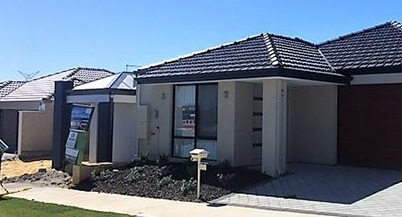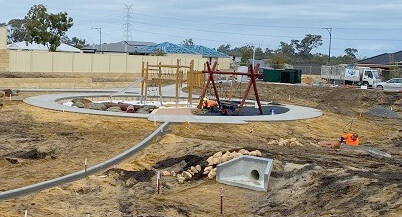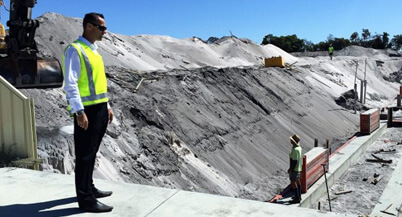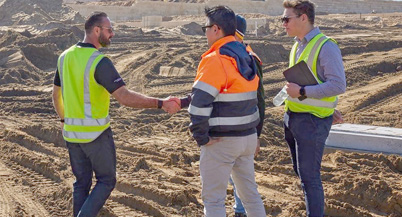Timing your Move into the Market is Paramount in Your SUCCESS!
Timing the real estate market is a task that baffles even professionals, making it no easy feat especially for developers. However, there are a few general rules that you can keep in mind when your either purchasing or selling your development to improve your chances of a favourable, lucrative outcome.
Many people say it’s easy just buy low and sell when its high! In theory it sounds correct – Yet the current state of your area’s real estate market must be taken into consideration to make this work for you.
One of the best ways to accomplish this is by working with an experienced real estate agent who is also knowledgeable about a particular region. A good real estate agent will not only have a strong working knowledge of the real estate industry as a whole, but will also know their local market inside and out.
There are three basic states of real estate markets to watch for:
Buyer’s Market
Also known as a cold market, this situation arises when there are more homes listed for sale on the market than interested buyers. A general rule is that if there is over six months’ worth of inventory on the market, it is a buyer’s or cold market. This can lead to average house prices falling, because fewer buyers lead to fewer overall sellers. As a result, sellers must drop their sale prices if they want to move their properties before the market warms up.
Seller’s Market
On the other side of the equation, there is a seller’s market or hot market. In this type of market, there are more buyers than there are properties for sale. This ensures that nearly every property in the area will sell quickly, due to high demand from interested buyers. A hot market is characterised by less than six months’ inventory on the market, and in some truly hot markets you’ll see as little as only two months’ worth of properties.
Neutral Market
The balanced state of the real estate market occurs when there is an equal number of properties and interested buyers. This may be due to the banks offering affordable interest rates, enticing buyers into the market. There will be no huge shift in sale prices in a neutral market, and it tends to be characterised by four months of inventory listed. This type of market tends to be favourable for both buyers and sellers, giving them an even playing ground.
Thinking as a developer you want to be buying up opportunities when it’s a buyers market! Reason being the vendors are in a more panick state of mind and if circumstances aren’t favourable, there lies an opportunity. Property Developers want to be buying when everyone else is screaming….. market is crashing, because this ensures you wont be over paying for the property. YES you may need to sit on and hold for a few years to really obtain the growth value of the opportunity but here lies the developer secret BUT also can be the nightmare that comes to life if you haven’t done you due diligence and followed the process.
LAG TIME!
You see from time of securing an opportunity to actually completing the entire project you can be looking at anything between 12-36 months depending on size of project.
This LAG TIME must be taken into consideration when assessing any opportunity as it will be detrimental to the outcome of the development. If you purchase in a sellers market and paid premium price and then during the course of your development the market moves downwards, you need to ensure you have enough buff to cover you and hoping at worst case break even on the project.
That’s why TIMING is so so important.
If you want to be a smart and savvy investor, you’ll need to develop a keen sense of knowing when the right time to act is. There are situations in business when you need to be patient and wait for the right opportunity to arise and there are situations when you need to act before it’s too late!
It is vital to develop knowledge about the strategies of timing the market if you want to be successful.
Here is a great example of how timing can play a huge role in your business success. In 2004 I came across a property, which at the time was a development site. The owner/developer had purchased it about eight months prior and was in a hurry to make a quick profit of $2 million by selling it. I liked the property but I decided not to buy it because it was too expensive.
Three years later, when the global recession was at its peak, the owner couldn’t sell the land. He had worked on developing this property and now he was pressured to sell it because it was six months before the title deeds on the l
and were ready to be issued for the new lots.
Due to the economic crisis there were very few buyers and I realised that this was the moment I had been waiting for.
I knew that I could make a great deal of money with this property so I decided to act. I contacted the owner and secured an option on the land for 120 days for 15
blocks at 30 per cent below market value. We then decided to put the property on the market, but before doing so we made a smart business move to increase
the property’s perceived value.
To achieve this we included a house plan on the land so we could sell the lots as turnkey house and land packages, including all of the furnishings. The potential buyers didn’t have to spend the time and effort looking for a builder and then getting them to design house plans that would work for the property.
This option made it more attractive to potential buyers compared to simply buying the land. We were also able to get a good build price due to the volume of properties being built and it was a great investment for the buyers as they ended up with instant equity once the house was completed.
The deal turned out to be a great success and we were able to sell 14 of the 15 lots with a really good profit.
So what is the moral of this story?
There is always good money to be made, even, and especially in an economic downturn!










